Buy keppra 500 mg Order endep 10 The treasure in the sand dunes
By Risidra Mendis
A tsunami in
Sri Lanka, un-believable but true. Who would have thought that this little ‘Pearl in the Indian Ocean’ would witness so much damage, destruction and loss of human lives due to a horrendous tsunami.
The tsunami of 2004 changed the lives of many and has left indelible scars on those who lost their kith and kin. It is nearly four years after that dreadful day of December 26, 2004.
But while thousands suffer in silence due to the loss of their relatives and friends there still remains a segment of people who due to their love for nature managed to save thousands of lives.
Many hotels along the coast suffered immense damage and many guests were engulfed by the waves. But those who believed in protecting nature, were witnesses to what nature could offer them in return.
Merciless destruction
While constructing hotels many construction workers mercilessly destroyed the sand dunes along the coast. The sand dunes that had formed over a period of time and which would have served as a barrier against the gushing force of water when the tsunami struck are not there anymore. What remained was bare, flat land and hotels in their place. The end result – the massive destruction of human lives and property as witnessed during the tsunami.
The Yala Safari Hotel built within 100 metres from the sea and which was a popular tourist attraction was totally wiped out by the tsunami. But on the other hand the Yala Village Hotel survived the tsunami with minor damage. The hotel and its staff survived the tsunami because they were protected by the sand dunes in close proximity to the hotel.
When this hotel was built many years ago precautionary measures were taken to build the hotel without destroying the sand dunes. By protecting nature, the hotel and its staff were rewarded through the sand dunes that served as a buffer. Many understood the importance and value of sand dunes only after the deadly tsunami hit the country.
Short memories
It was ultimately the staff of the Yala Village Hotel that came to the help of the remaining guests and staff of the Yala Safari Hotel. However when it comes to Sri Lankans their memories are very short. What happened almost four years ago is now history to many who believe that the country will not be hit by another tsunami. However according to scientific predictions Sri Lanka is very likely be hit by another tsunami in the not too distant future.
It is interesting to note that the very hotel that was saved from the tsunami due to the sand dunes ultimately took measures to destroy part of the sand dunes.
Speaking to The Sunday Leader environmentalists in the area said during the rainy season early last year (2007) some officials from the hotel had cut part of the sand dunes to build a road to the hotel.
Pleas ignored
The pleas of environmentalists not to destroy the sand dunes only fell on deaf ears. “Hotel officials were only interested in preparing the road as soon as possible so that their guests could arrive as it would give them an additional income. The hotel staff who took this decision told us it is easy to take the sand from the sand dunes rather than transport it from elsewhere. These were the same hotel staff who witnessed the horrendous tsunami in 2004,” environmentalists said.
But thankfully due to the intervention of senior hotel officials the cutting of sand dunes was stopped.
The Coast Conservation Department (CCD) has also introduced a project to protect the remaining sand dunes in tsunami affected areas in the country.
Creating awareness
The sand dune rehabilitation project introduced by the CCD some time ago is aimed at creating an awareness among the communities living along the coastal areas.
During former CCD Director Dr. R Samaranayake’s tenure reconstruction of sand dunes in the Hambantota area had commenced. “Hambantota was one of the worst affected areas due to the tsunami. The Karagam Levaya was badly affected because the people of the area had destroyed the sand dunes. The tsunami waves entered through the Karagam Levaya and created a lot of damage. Kosgoda was also badly damaged due to the tsunami. However with the help of the community in the area we were able to reconstruct the destroyed sand dunes in the Kosgoda area,” Dr. Samaranayake said.
Reconstruction
Reconstruction of sand dunes in the Pottuvil and Arugam Bay areas and on the eastern coast were also carried out by the CCD.
A sum of Rs.150 million was allocated for the reconstruction of the sand dunes at the time. The project includes the collecting of sand from off shore areas that were used to fill up areas where the sand dunes were destroyed. After the filling of these areas is completed CCD grows vegetation on top of the dunes.
The accumulation of windblown sand marks the beginning of one of nature’s most interesting and beautiful phenomena. Sand dunes occur throughout the world, from coastal and lakeshore plains to arid desert regions. Sand dunes also provide habitats for a variety of life which marvellously adapts to this unique environment.
Formidable barrier
Picturesque dunes against a sky of blue or a full moon, with perfectly contoured shadows of ripples and undulating crests, have always been a favourite subject of photographers. Dunes have also been the subject of many desert movies, and have historically been a formidable barrier to vehicular and rail travel.
The origin of sand dunes is very complex. An abundant supply of loose sand in a region generally devoid of vegetation (such as an ancient lake bed or river delta), a wind energy source sufficient to move the sand grains and a topography, whereby the sand particles lose their momentum and settle out are the main prerequisites needed to form a sand dune.
Any number of objects, such as shrubs, rocks or fence posts can obstruct the wind force causing sand to pile up in drifts resulting in large dunes. The direction and velocity of the winds and the local supply of sand are the results of a variety of dune shapes and sizes.
If the wind direction is fairly uniform over the years, the dunes gradually shift in the direction of the prevailing wind. Vegetation may stabilise a dune, thus preventing its movement with the prevailing wind.
source:
http://www.thesundayleader.lk/20081109/REVIEW.HTM
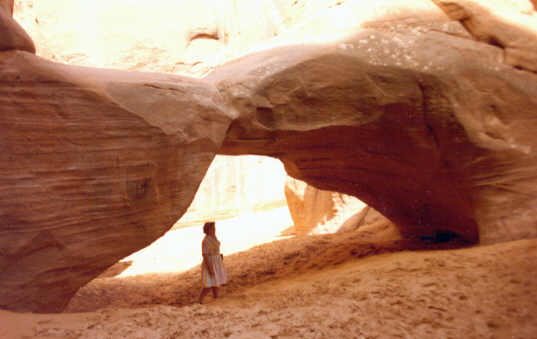


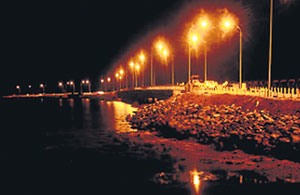
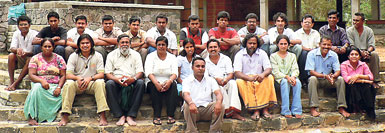
 This is a small perennial plant that grows in warm climates. They look very much like basil except for the size of the leaves and the flavour.
This is a small perennial plant that grows in warm climates. They look very much like basil except for the size of the leaves and the flavour.
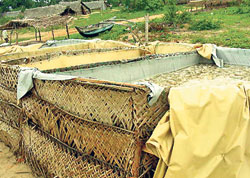

![Pada Yatra pilgrims stand before Ukanta Malai Velayudha Swami Temple [16k]](https://www.arugam.info/pix/okanda_swamikovil.jpg)

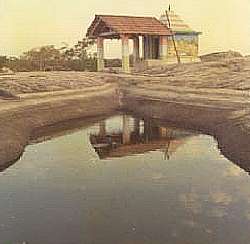

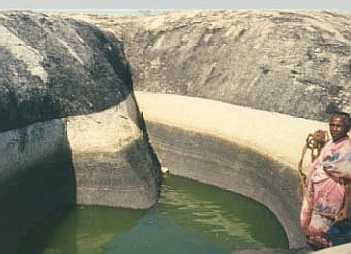


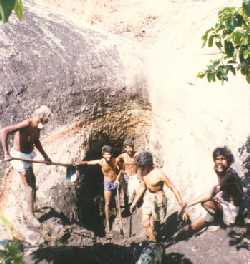




 Arugam Forum
Arugam Forum Arugam Photo Galleries on Picasa
Arugam Photo Galleries on Picasa Old Website
Old Website Press Coverage
Press Coverage Surf Forecast for Arugam Bay
Surf Forecast for Arugam Bay